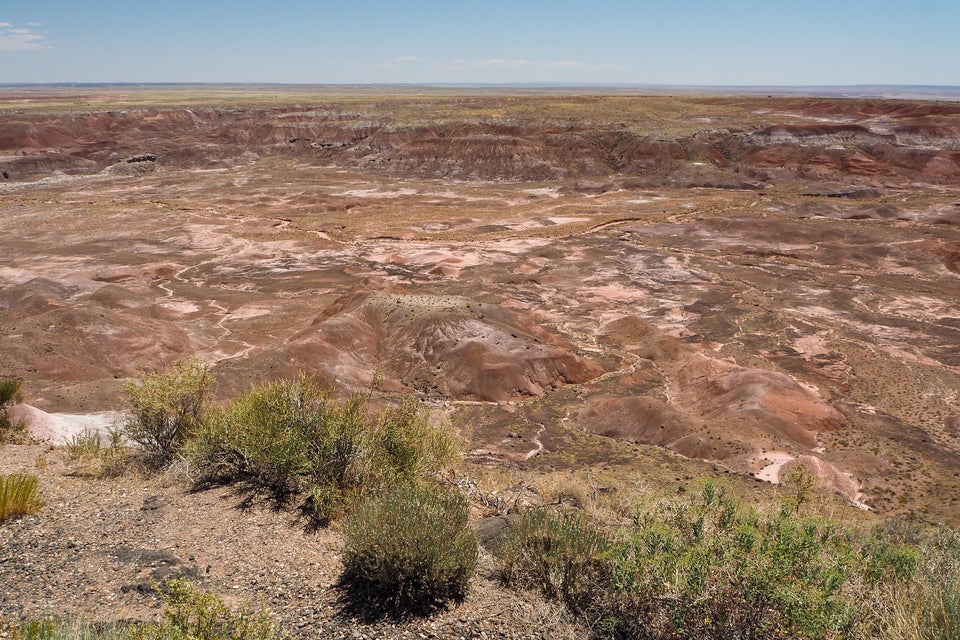Belmont: The Sprawl Monster Is Back

We’re blowing it; taking our eyes off the ball. Twenty years ago the link between land use planning and the struggle to reduce greenhouse gases and other air pollutants was clear to the Palo Verde Sierra Club members. Ending sprawl was seen as a way to protect habitat and our water supply. The social and health benefits of providing walkable and bikeable neighborhoods were undisputed. It was routine for the Sierra Club to promote van tours to different neighborhood types around the Valley so that our members could directly experience what it would be like to live there.
Club members urgently wanted to gain a measure of control over sprawl. At the same time they recognized that developers had tremendous influence with the established politicians. This lack of faith in the normal workings of government led them in 2000 to put Proposition 202 on the ballot. The Prop 202 fight was entirely led by the Club and it was the zenith of our political power in Arizona.
The following quotation from the proposition summarizes the attitude of the club and of a lot of Arizona citizens.
“THE PEOPLE OF ARIZONA FIND THAT RAPID AND POORLY PLANNED URBAN GROWTH IS CAUSING SERIOUS HARM TO THE PUBLIC HEALTH, SAFETY AND WELFARE BY DAMAGING THE STATE’S NATURAL HERITAGE; IMPOSING UNFAIR TAX BURDENS ON EXISTING RESIDENTS; OVERBURDENING POLICE PROTECTION, EMERGENCY SERVICES, SCHOOLS, ROADS, WATER SUPPLIES, AND OTHER PUBLIC FACILITIES AND SERVICES; CREATING UNHEALTHFUL LEVELS OF AIR AND WATER POLLUTION; HARMING ECOSYSTEMS; DEGRADING SCENIC BEAUTY; AND IMPAIRING THE ABILITY OF CITIES AND TOWNS TO MAINTAIN COMMUNITY CHARACTER AND PROTECT NEIGHBORHOODS.”
We had right on our side: they had all the money and the political and media establishments on theirs. They kicked our butts.
So why is this no longer a burning issue with the Palo Verde Group? Undoubtedly losing Prop 202 had a discouraging effect but the more important reason was that the real estate market went into the toilet and the sprawl developments were all mothballed. This is documented in a fun way on AZ 101 podcast “What’s Sun Valley Parkway, the ‘Road to Nowhere’.”
But now, like Cretaceous monsters emerging from a melting ice cap, these sprawl monsters are coming back to life, Belmont among them. Belmont is hardly the only sprawl monster in Arizona, or even in the West Valley, but it does serve as an archetype of the breed.
Despite being hailed as a “smart city,” a “city of the future,” and a project of Microsoft founder Bill Gates, Belmont is neither smart nor a city. It has little to do with Bill Gates. Cascade Investment LLC, a firm that manages some of Bill Gates’ money, used a subsidiary to invest $80 million in Belmont. That’s the extent of Gates’ involvement. Then the manager of Belmont Partners said “Belmont illustrates that Arizona remains at the leading edge of trends in American urban planning and development keying off of advances in solar power and electric distribution systems, autonomous auto testing, broadband, and data centers.” As if broadband, solar power, electric distribution systems, data centers. and autonomous auto testing don’t characterize every community. The fact that Bill Gates had some money in the project was enough to convince the media that Belmont is somehow on the cutting edge.
Belmont is really a 1990s era subdivision on a grand scale. The site is almost as big as Paris with a proposed population as large as Tempe. It is low density, auto-dependent development. It’s a stupid development embodying the worst of the past. Its supposed advantage is that it sits at the intersection of I-10 and the proposed I-11. It’s a defining instance of freeway dependent sprawl.
So what should we do about Belmont and the other sprawl monsters? The 1st step is to educate ourselves about where they are proposed, what are their drawbacks and how we can embrace actual smarter development. Next we need to make it an issue again by educating the public. Then hopefully we will have a legislature that isn’t totally dependent on developer money and we can push to get the ideas and most of the language of Prop 202 embodied in legislation. If that approach doesn’t work we can always try the initiative route again. It’s harder these days to get legislation on the ballot but, I believe, it might be winnable if we got it there. Arizona is more progressive now. In 2000 it would have been unthinkable to have propositions legalizing marijuana and taxing the rich to support education. We aren’t alone these days. We have allies like Chispa AZ and the Sunrise Movement. And developers don’t dominate public discussion the way they did in 2000. Additionally, the effects of climate change are more apparent. We might win.